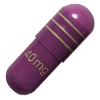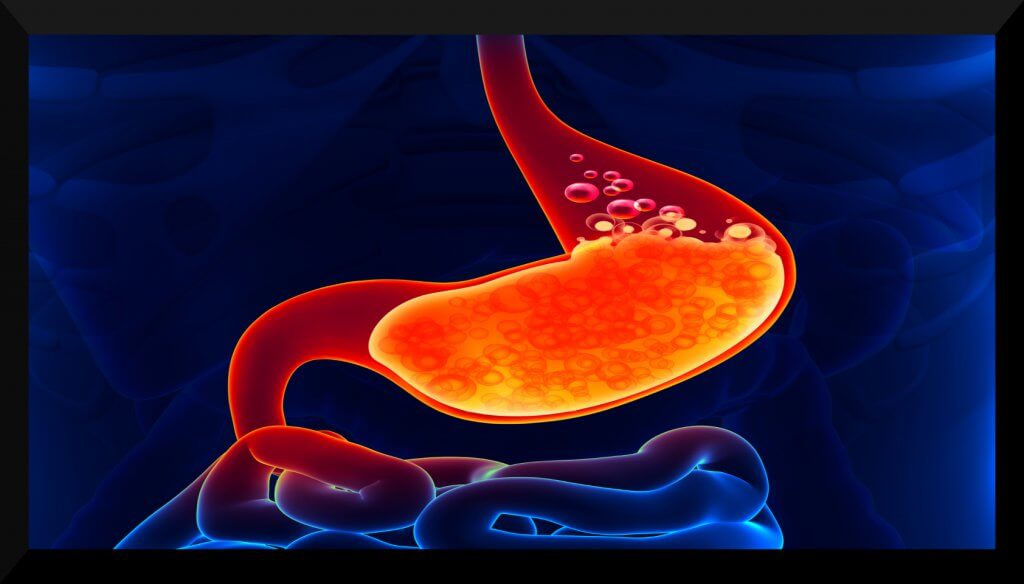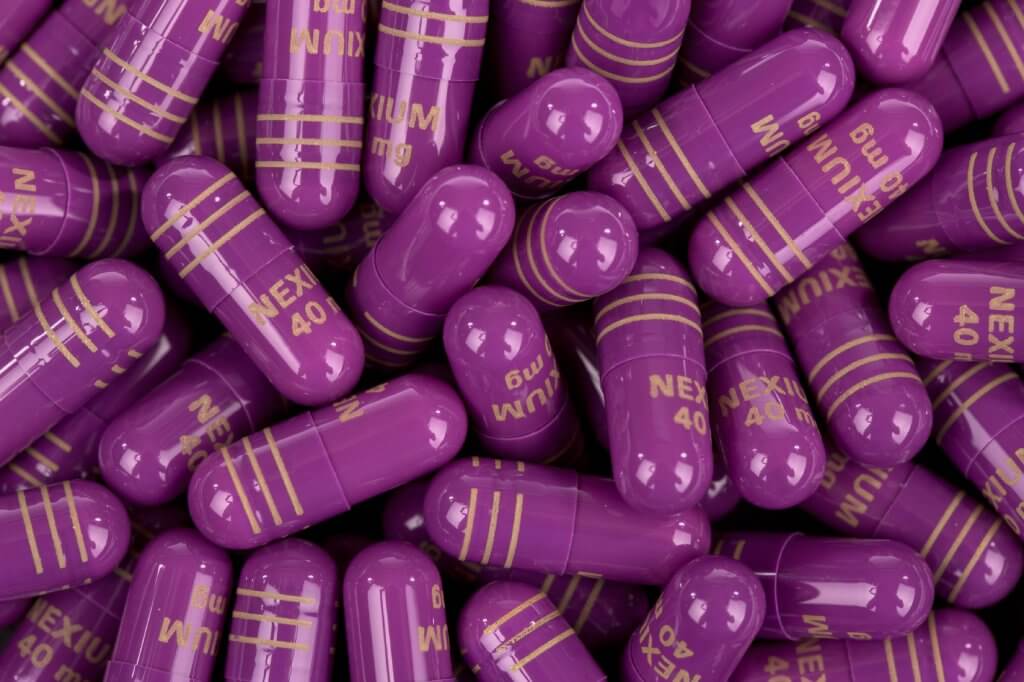MAIN INFORMATION

- Name: Nexium
- Brand Name: Esomiz / Sompraz / Zoleri / Lucen / Esopral / Axagon / Nexiam
- Active ingredient: Esomeprazole Magnesium
- Used for: Excessive Stomach Acid
- Dosages (mg): 20/40
- Drug Class: Proton Pump Inhibitor
CONTENT
- About Nexium
- Nexium Uses
- Nexium Contradictions
- Therapeutic Effects of Nexium
- Possible Nexium Side Effects
- Nexium Drug Interactions
- Drug-Food Interactions
- How to Take Nexium?
- Important Information
- Overdose
- Terms and Conditions of Nexium Storage
- Nexium Ingredients
About Nexium (Esomeprazole Magnesium)
Nexium is a medicine that decreases the generation of hydrochloric acid of the stomach glands. Due to the suppression of the secretory activity of glands, Nexium decreases the acidity of gastric juice. It is used in the treatment of various conditions related to redundant secretion of hydrochloric acid (for example, gastric ulcer or duodenal ulcer, gastroesophageal reflux disease, mucosal damage under the influence of NSAIDs, eradication of Helicobacter pylori, etc.).
Generic Nexium Uses
Nexium comes in tablets of 20 mg and 40 mg as well as in sachets (granules) for oral suspension.
Nexium tablets and granules are usually prescribed for the treatment and prophylaxis of the following diseases and conditions:
- The treatment of erosive GERD
- Supportive therapy for a long time with incurable esophagitis, aimed at preventing recurrence
- Elimination of any form of GERD symptoms
- Peptic ulcer and duodenal ulcer
- In the combined treatment (with antibiotics) of gastric ulcer or duodenal ulcer relating to Helicobacter pylori
- Prevention of recurrence of ulcers in people suffering from gastric ulcer or duodenal ulcer relating to Helicobacter pylori
- Long-term therapy aimed at suppressing redundant secretion of hydrochloric acid in people who in the past suffered from bleeding peptic ulcers
- Pathology of the stomach caused by the prolonged use of NSAIDs
- The treatment of gastric ulcers caused by taking any NSAIDs (for example, aspirin, indomethacin, diclofenac, ibuprofen, Nurofen, etc.)
- Relapse prevention of gastric ulcer and duodenal ulcer caused by the prolonged use of NSAIDs
- Other diseases associated with redundant excess generation of hydrochloric acid
- Zollinger-Ellison syndrome
- Idiopathic hypersecretion

Nexium Generic Contradictions
- Hypersensitivity to esomeprazole and other ingredients of the drug
- Hereditary intolerance of fructose, or sucrase-isomaltase failure, or glucose-galactose malabsorption
- For children, Nexium is assigned for up to 8 weeks for short-term treatment of gastroesophageal reflux disease
- The medicine should not be applied together with nelfinavir ad atazanavir
Precautions: severe renal insufficiency.
Therapeutic Effects of Nexium Generic
Nexium has the only pharmacological effect – it reduces the generation of hydrochloric acid produced by the gastric glands and thus decreases the acidity of gastric juice. This pharmacological effect is of great importance because the need to reduce the acidity of gastric contents and achieve less intensive work of the gastric glands is the key in the treatment of many diseases. Nexium belongs to proton pump inhibitors.
A distinctive feature of Nexium is its ability to reduce excessive production of hydrochloric acid. This means that if a drug (such as NSAID) has provoked an increased secretion of hydrochloric acid in the stomach, Nexium can suppress it. Nexium effect occurs within 1 hour after taking a dose of 20–40 mg.
When receiving 40 mg of the drug a day for 4 weeks, gastroesophageal reflux disease is cured in 78% of the cases. When the medicine is received for 8 weeks at the same dosage, the disease is cured in 93% of the cases. The addition of 20 mg of Nexium daily for eradication therapy with antibiotics leads to the elimination of Helicobacter pylori in 90% of patients within two weeks. In addition, patients taking Nexium for eradication therapy, conducted over a stomach ulcer or duodenal ulcer, after completing the course don’t need to take antisecretory drugs for the healing of the ulcer and relief of painful symptoms.
Nexium has a better efficiency in the healing of gastric ulcers induced by administration of NSAIDs, as compared to ranitidine. In addition, Nexium is highly effective in the prophylaxis of gastric ulcers in patients receiving NSAIDs.
Application of Nexium may cause a minor risk of infectious diseases of the digestive tract, provoked by Salmonella spp. and Campylobacter spp.
Possible Side Effects
Side effects of all forms of Nexium (tablets and granules) are the same and include:
- Common: headaches, diarrhea, abdominal pain, flatulence, constipation, vomiting, and swelling
- Occasional: dermatitis, rash, pruritus, hives, insomnia, drowsiness, dizziness, blurred vision, and dry mouth,
- Rare: allergic reactions, hepatitis, bronchospasm, reduction of the total number of platelets and leukocytes, aches in joints and muscles, depression, reduction of sodium concentration in blood, stomatitis, hair loss, candidiasis of the digestive tract, and sweating
- Very rare: hallucinations, an extreme reduction in the number of all blood cells, aggression, liver failure, nephritis, gynecomastia, Stevens-Johnson syndrome, and toxic epidermal necrolysis
Drug Interactions
Nexium reduces the absorption of drugs that contain ketoconazole, itraconazole, and erlotinib. However, it enhances the absorption of digoxin by 10–30%.
The drug interacts with medicines applied for the treatment of HIV/AIDS, causing changes in their concentration in blood and absorption. In addition, an increase in the dosage of antiviral medicines does not eliminate the Nexium effect. Thus, these drugs should not be used together.
Nexium leads to an increased concentration of the following drugs:
- Citalopram
- Diazepam
- Imipramine
- Phenytoin
- Clomipramine
- Cilostazol
- Methotrexate
When using the above-mentioned drugs simultaneously with Nexium, their dosage should be reduced by 30–40%.
Rifampicin and medications that contain components of Hypericum lead to a decrease of Nexium concentration in plasma.
Drug-Food Interactions
There should be at least 30–60 minutes between the intake of tablets or granules and food. This means that patients can take a pill 30–60 minutes before or after eating. The duration of therapy, dosage, and dosing frequency are determined by a disease.
How to Take Generic Nexium?
The pills should be swallowed whole, without being chewed and with plenty of water. If patients have difficulties swallowing the tablet whole, it can be placed in half a glass of non-carbonated water until it is dissolved. Then patients should drink the medicine immediately.
When treating GERD with esophagitis, patients should take Nexium at the dosage of 40 mg once a day for 4 weeks. If after a course of therapy, the disease has not been cured or some symptoms have survived, the same dosage of 40 mg a day should be taken for another 4 weeks.
Nexium at the dosage of 20 mg one time a day should be assigned for several months for maintenance therapy after treatment of GERD with erosive esophagitis to prevent its relapse.
For the treatment and prophylaxis of recurrence of gastric ulcer or duodenal ulcer relating to Helicobacter pylori, Nexium should be assigned at the dosage of 20 mg twice a day for a week.
For the treatment of gastric ulcer provoked by the prolonged use of NSAIDs, Nexium should be assigned at the dose of 20 mg or 40 mg one time a day for 4–8 weeks.
For the treatment of various diseases related to abnormal excess generation of hydrochloric acid (Zollinger-Ellison syndrome, etc.) Nexium should be taken at the dosage of 40 mg twice a day. If this dosage does not result in the elimination of symptoms, it is necessary to increase it until the condition of a patient is normalized. The maximum allowable dosage of Nexium is 120 mg twice a day.
Important Information
Nexium should not be taken if there are any alarm symptoms (for example, sudden weight loss, repeated vomiting, or dysphagia) and if the patient has a gastric ulcer (or suspected stomach ulcer) because Nexium treatment may lead to the smoothing of the symptoms and delay a real diagnosis.
 If patients suffer from kidney failure, the correction of the dosage is not required. However, the intake of Nexium in patients with acute kidney failure is limited. Thus, these patients should be careful when using the drug.
If patients suffer from kidney failure, the correction of the dosage is not required. However, the intake of Nexium in patients with acute kidney failure is limited. Thus, these patients should be careful when using the drug.
If patients suffer from mild to moderate liver dysfunction, the adjustment of the dosage is not required. In patients with severe hepatic impairment, the maximum daily dose should not exceed 20 mg.
Nexium is contraindicated in children under 12 years old.
Experimental studies of the drug in animals have not revealed any adverse effects on the fetus, but such tests were not carried out in pregnant women for obvious ethical reasons. Thus, Nexium is not recommended during pregnancy. However, if there is a need to take the drug, it can be taken by pregnant women only if the expected benefits outweigh the possible risks.
Since it is not known whether or not Nexium gets in breast milk, the drug should not be used during the entire period of breastfeeding.
Nexium can cause dizziness, blurred vision, and severe drowsiness. Thus, when taking the medicine, the patients should refrain from driving a car or do work that requires a high concentration of attention.
Overdose
Only cases of intentional overdose with Nexium have been registered when the characteristic symptoms appeared after taking at least 280 mg of the drug at a time. Nexium overdose is characterized by the emergence of general weakness and discomfort on the part of the digestive tract. Symptomatic therapy is required to treat the overdose.
Terms and Conditions of Nexium Storage
Nexium should be stored at the temperature no more than 30 degrees Celsius in its original packaging, in places not accessible to children. A shelf life of the drug is 3 years.
Generic Nexium Ingredients
The active ingredient is esomeprazole 20 mg and 40 mg.
Auxiliary components include: iron dioxide reddish brown (E172), glycerol monostearate 40-55, magnesium stearate, yellow iron oxide (E172), polysorbate 80, macrogol 6000, methacrylic acid-ethyl acrylate copolymer (1:1), sugar, hydroxypropyl cellulose, sodium stearyl fumarate, triethyl citrate, microcrystalline cellulose, titanium dioxide (E171), hypromellose, talc, crospovidone, and synthetic paraffin.
Nexium Generic Guide by Canadian Online Pharmacy – www.mycanadianpharmacymall.com







